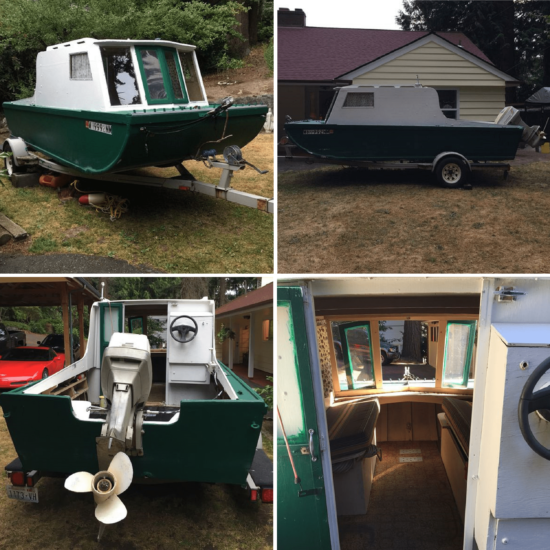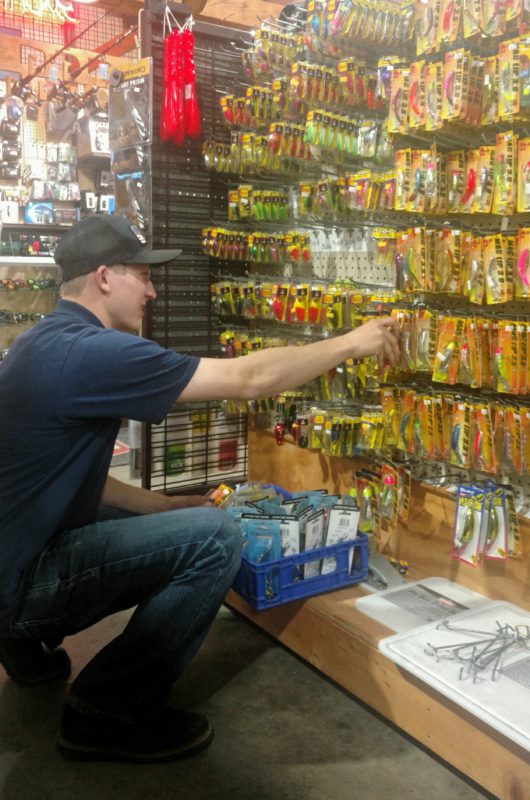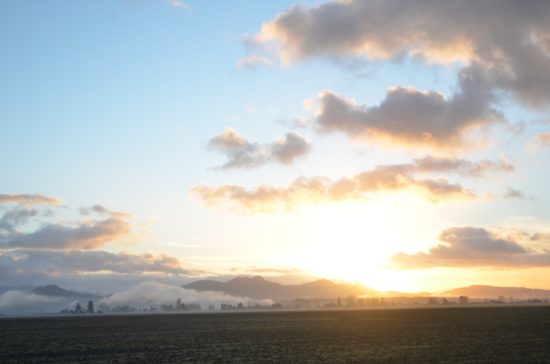
How To Fish The Lower Skagit For May Spring Chinook
For the first time since the birth of the Kingdome, Seahawks and Microsoft, the lower Skagit will be open for Chinook fishing in May.
And that raises the question, so, uhhhhhh, does anybody remember exactly how to catch these things in the big North Sound river next month anyway?
“You need to find a guy with a Skagit scow to answer that question,” jokes Brett Barkdull, the WDFW district fisheries biologist. “If he’s under 70, he’s just a poser!”
For the uninitiated — which included yours truly up until a very recent search of the interwebs — a Skagit scow is a rather unusual-looking watercraft from back in the day.
They’re like what might happen if, say, in the weedy backyard of some Sedro-Woolley sportsman, a Livingston and a flat-bottom duck boat shacked up and had a kid and then decided the kid would actually look a lot better with that old custom pickup truck camper over by the burn barrel plopped down on top.

“Yep, not a very pretty-looking combo, but functional,” notes Barkdull. “The boats were designed to be comfortable, i.e. you could anchor up in a spot and stay for a weekend. Common accessories included wood stoves, beds, fridges, etc.”
They’re essentially a much downsized version of the open-top ferries, cargo and lumber haulers and other work boats of the early days of settlement here and elsewhere in Pugetropolis.
Someone who might have not only brought a few Chinook over the gunnels of Skagit scows but perhaps sold one or two over the years is Larry Carpenter.
He’s a longtime Mount Vernon-area angler and retired local boat dealer who is pretty excited about the May 1-31 fishery on the Skagit between the Highway 536 Bridge in town and Gilligan Creek.
Carpenter recalls a range of successful approaches from back in the day.
“We used to troll the lower river with red (small) herring. Worked well for springers and big Dollies,” he says, Dollies being a name sometimes used for river-running bull trout.
“Just above the Mt. Vernon Bridge up to Avon, I trolled big Canadian Wonders upstream and was successful,” adds Carpenter, who is also the chair of the Washington Fish and Wildlife Commission. “Sometimes anchoring with big Winner Spinners was also a good technique.”
That last one is what local fishing sharpie Kevin John of Holiday Sports in Burlington says the diehards will be running.
“It’s going to consist of tee beads in green, red or chartreuse, a 50/50 Indiana blade (likely 7s and 8s, 6 if the river gets low) and in this case a 2/0 treble hook,” he says. “It’s a great way to enjoy the fruits of our local brewing industry since you’re just going to be on anchor.”
In your scow (or jet sled), of course.
No word on whether John is partial to products from the Skagit, La Conner, Kulshan or Chuckanut swillhouses, but for the above setup he does recommend an 18- to 30-inch dropper line with a heavy, 12- to 16-ounce cannonball “so the lure stays put when the fish backs off.”
He adds that Spin-N-Glos with shrimp and/or eggs, as well as bait-wrapped Kwikfish will be popular, especially given the high likelihood the glacial Skagit will be on the cloudy side.

Herring behind an inline flasher would be another choice for the water conditions, John says.
Barkdull says that half-and-half Dick Nites used to be used too.
The Skagit is known for having some of the bigger Chinook in Puget Sound, but we probably won’t catch any springers the size of the one that Northwest Sportsman contributor Doug Huddle remembers hanging in the truck-stop diner of restaurateur-angler Harold Crane he worked for as a teen (very briefly in the kitchen, more remuneratively mowing the lawn).
Huddle said it was a 68-pounder and perhaps was caught on something called a Wells Spoon, made by a Mount Vernon nursery owner, and a favorite of hogliners who would run it behind lead, drop it back 40 or 50 feet and “sip coffee, McNaughtons or the soup of the day.”
“I kinda like to be actively hunting them myself,”John notes, “so I’d really look at Mag Warts in chrome, flame and chartreuse varieties.”
Mag Warts are famed from another spring Chinook fishery at the other end of Washington’s Cascade Range, but for this one this season WDFW is forecasting a total of 6,116 springers back to the Skagit system, with 4,113 of those being harvestable hatchery fish.
They’ve primarily been fished on in the upper Skagit, from Rockport to Marblemount, and in the lower end of the Cascade since 2005 and 2006, respectively.
The last time the lower Skagit was open for spring kings was 1989, but that fishery didn’t start until a month later, June 1, according to Barkdull.
He says that he had to go through old fishing pamphlets all the way back to 1976 before he found one that listed Chinook as open in May around Mt. Vernon. The season was open year-round for kings then.
(For the record, the 2009 lower river Chinook fishery was for summer/fall fish, but returns haven’t been strong enough since then to hold another season on that stock.)
This season’s daily limit is two hatchery kings, and depending on ocean feeding conditions they will likely weigh on average 10 to 12 pounds. Per WDFW’s emergency regulation change, a night closure is in place.
Gilligan Creek, the upstream boundary, drains into the Skagit on the river’s south side 3 1/2 miles west of the tiny community of Day Creek.
State salmon managers say they will be monitoring the fishery so that the “encounter” guideline isn’t eclipsed and are asking anglers to cooperate with creel samplers.
Barkdull says WDFW relies on accurate catch stats to manage opportunities and maintain ESA coverage from federal overseers.
Unfortunately, some anglers insist on being sneaky, perhaps because they think it will help extend the season or bear some grudge, but in the case of saltwater fisheries it only results in the cash-strapped agency having to operate test fishing boats to the tune of $20,000 a month and which prevents the opening of other opportunities.
“If we have to send out test boats on the Skagit we just won’t have the fishery” next year, says Barkdull.

If you don’t have a Skagit scow or other watercraft, don’t worry, you can still try your luck for May springers.
“For the bank guy it’ll pretty much be a plunking show, likely with a heavier rod and lead in the 6- to 10-ounce range,” tips John at Holiday Sports. “Shrimp is always most popular, but it’s hard to beat hot eggs wrapped in spawn netting.”
Bank spots begin at Youngs Bar just above the lower deadline and include off Whitmarsh Road, along the soccer fields in Burlington, River Road in Sedro-Woolley, pull-offs along South Skagit Highway, and the mouth of Gilligan Creek.
And whether you’re fishing of the shore or from a boat, he has two final suggestions.
“Biggest thing for me is scent and noise,” says John. “We’re likely going to have limited vis for much of the fishery and you have to give them something to key in on.”
